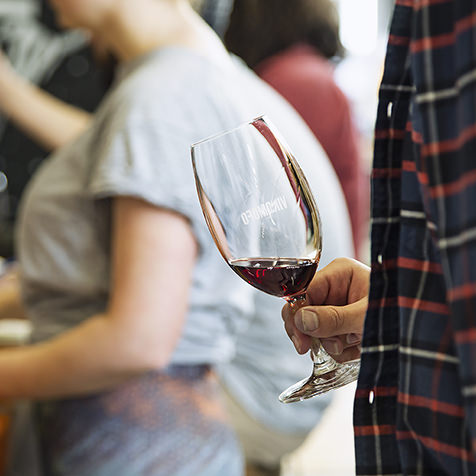How to pair your food and wine like a pro
One of life’s greatest pleasures is enjoying tasty food with an equally delicious bottle of wine, but getting it right is much easier than you think; here’s how, with three simple tips:
Ask yourself, does it make sense?
Get to know your food and then let your five senses guide you (and trust them!). It is very easy to fall into the classic trap that white wine must go with white meat or fish, and red wine must go with red meat, but it is important to look at the dish as a whole rather than just at the main component. Think about the sauces, the accompaniments, the cooking method and even the temperature to help guide your pairings. These four principles will help:
Weight
Quite simply, if you have a rich dish then you need a rich wine to match. This is when it’s important to consider the cooking method. For your food: think about the difference between poached proteins compared to those that have been braised for hours. For your wine: it is helpful to look at its colour to help understand richness. For example, if you compare a young riesling to an oaked chardonnay, or a pinot noir to a cabernet sauvignon, you can begin to understand which is richer or fuller in weight.
Temperature
Yes, temperature does actually make a significant difference. Think about the different wines you’d expect with fresh carrot sticks over a carrot soup. What’s more, think about what we enjoy eating and drinking when it’s hot or cold. For example, in summer we tend to enjoy crisp fresh salads, so we’d want the same outcome from our wine, such as a refreshing sauvignon blanc.
Texture
Quite literally, think how the food will feel in your mouth, is it crunchy or soft and smooth? Equally, think about the texture of the wine. For example, imagine a crisp sparkling with crunchy fried chicken, or an oaked chardonnay with a buttery fish.
Intensity
Think about how intense the flavours are in the dish, or how complicated it is. Are there a lot of spices or is it a simple chicken salad? Like the weight, the wine will need to equal in intensity, this will ensure that neither will dominate the other. When considering intensity it is often helpful to think of alcohol content. For instance, a poached fish with a low alcohol pinot gris/grigio or a peppery shiraz with spice rubbed beef.
A Balancing Act
Secondly, flavour, is of course, one of the most important factors for food and wine pairing. Flavour, as we know and love, is complex; so I’ll break it down for you.
Sweetness
Sweetness in food will amplify any bitterness, astringency, acidity or alcohol and reduce the perception of body, sweetness and fruitiness in a wine. So when pairing with sweet foods the wine needs to be of equal or more sweetness.
Bitterness
Bitterness in food will also increase any bitter taste in the wine. Therefore, try counterbalancing bitterness with fruity, low tannin wines.
Acidity
Acidity in food will enhance the body, sweetness and fruitiness in a wine and lessen the perception of acidity often making them seem flabby and fat. Therefore, look for a wine of equal or more acidity.
Umami
By umami, we mean a distinct savoury taste; these foods intensify any bitterness, astringency, acidity and alcohol and reduce the perception of body, sweetness and fruitiness in the wine. Try wines that are distinctly fruity in style.
Saltiness
Salty foods will increase the perception of body and decrease the perception of astringency, bitterness and acidity in the wine. Honestly, salty foods can help to soften some of the harder elements in wine. Counterbalance salty food with acidity, carbonation or sweetness.
Spiciness
Spicy foods amplify bitterness, astringency, acidity and the alcohol burn and will also decrease any body, richness, sweetness or fruitiness in the wine. Look for wines that are low in alcohol, fruity and have sweetness.
Think like a local
This is perhaps one of the most well known rules in food and wine pairing, but it certainly cannot be overlooked. If you start to think regionally it’ll begin to make more sense for you. So, to put this in perspective: if you’re eating French, drink French (or at least a French varietal, well at least until you get used to flavour balancing). But, also remember, France is a big country, it’s important to think about where in France they eat that style of dish. For example, down south by the Mediterranean, they tend to enjoy fresh seafood and classic dishes like bouillabaisse; where as, up north, near the border of Germany, you’ll find rich dishes like sausages and quiche. So next, think what varietals and styles are grown in that region. For instance, in the southern regions like Provence enjoy mineral yet textural white wines from varietals like clairette, marsanne and ugni blanc with dishes like bouillabaisse. In northern regions like Alsace, enjoy aromatic white wines like riesling, gewurztraminer, pinot blanc and pinot gris, with sausage. The same rule would apply here in Australia, for instance, in Tasmania where fresh seafood is abundant, their cool climate chardonnays, rieslings and sparkling wines are a perfect match with seafood.
Ultimately, if you try to consider these three tips you’ll be pairing food and wine like a pro in no time!



